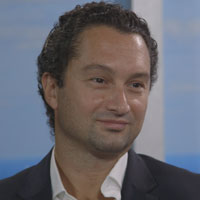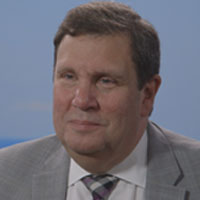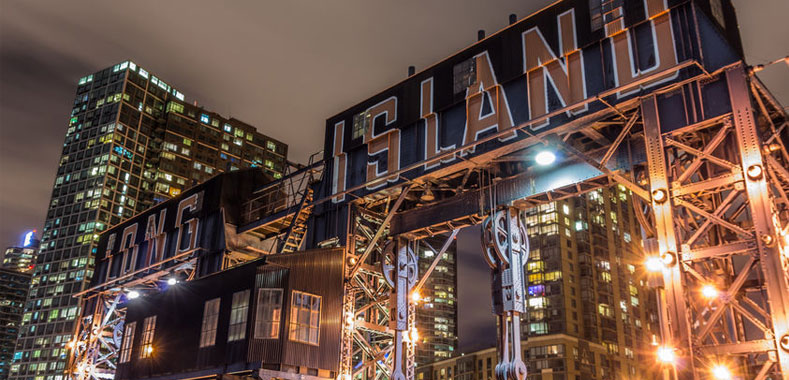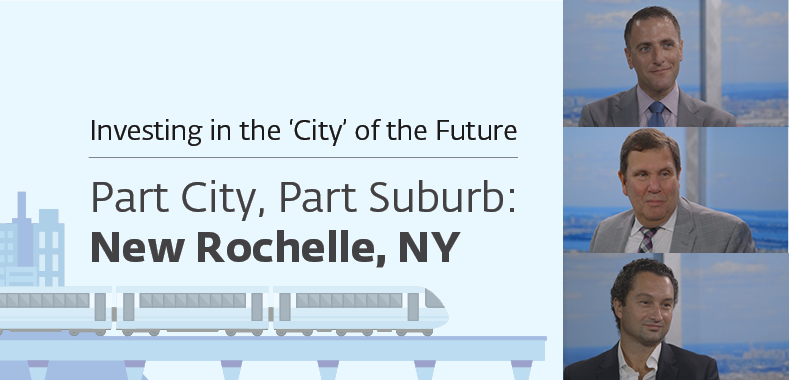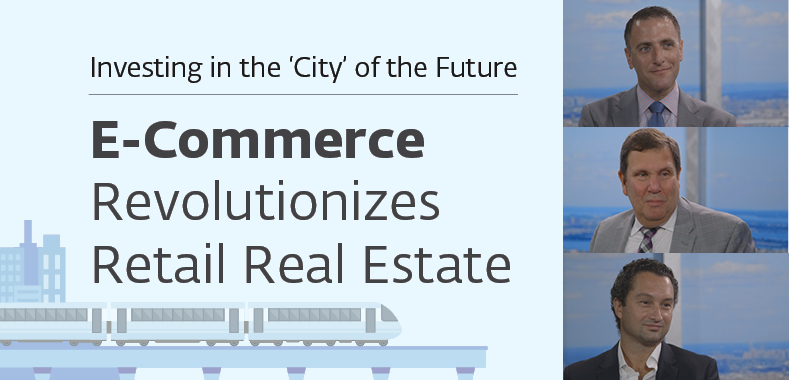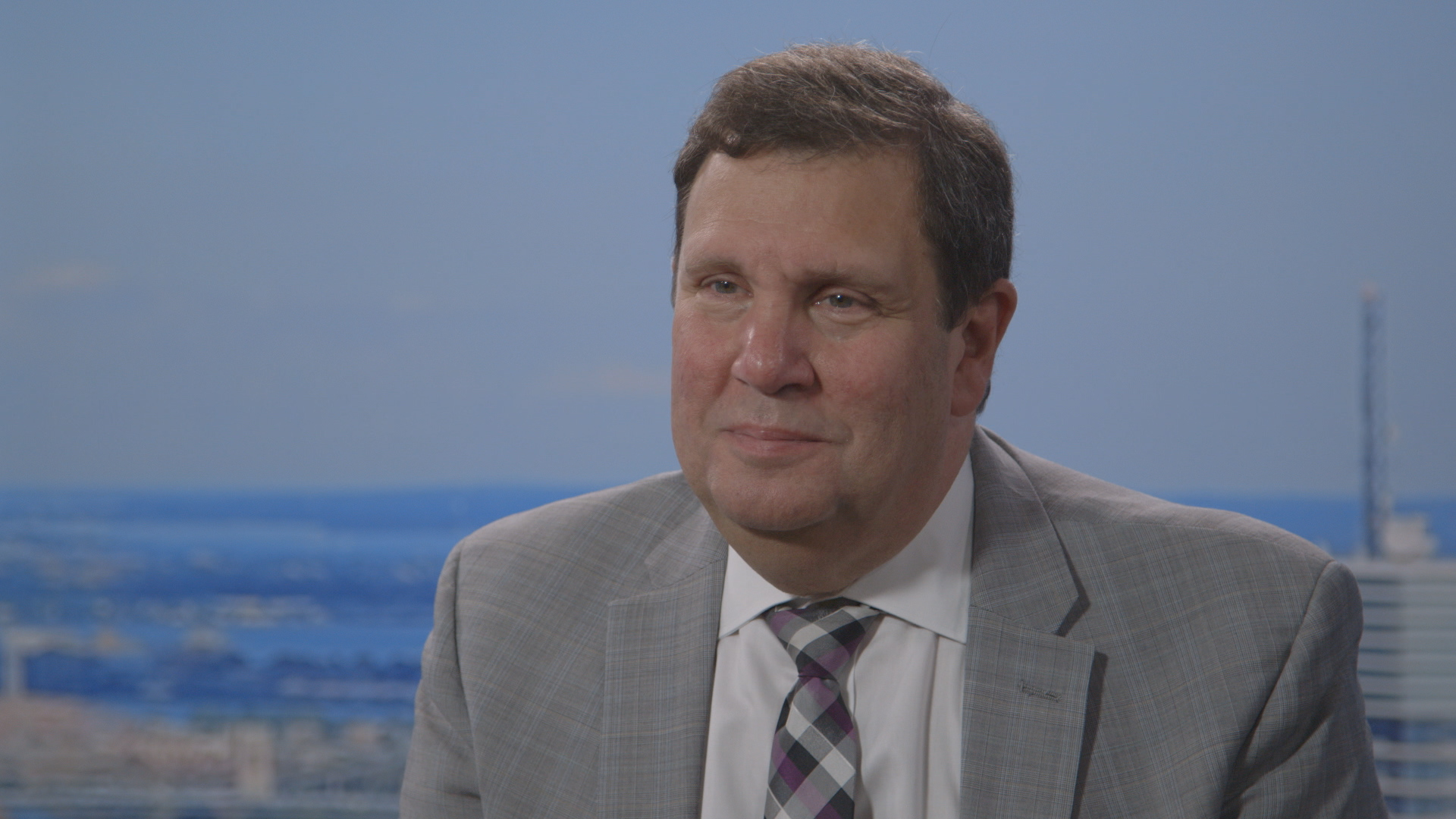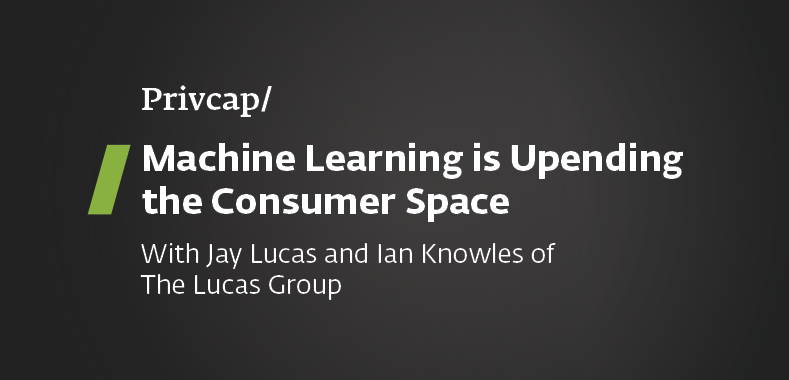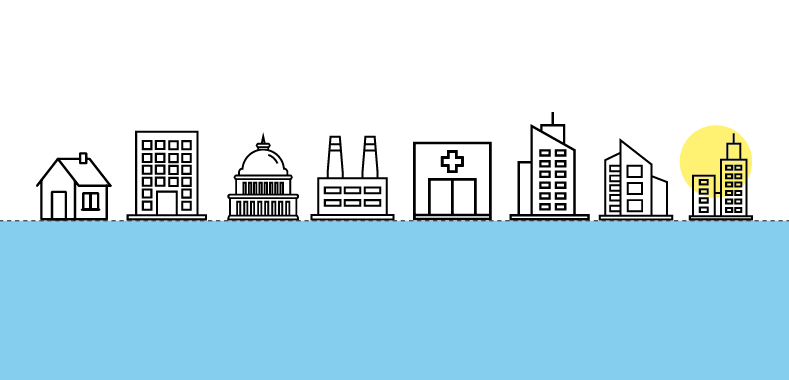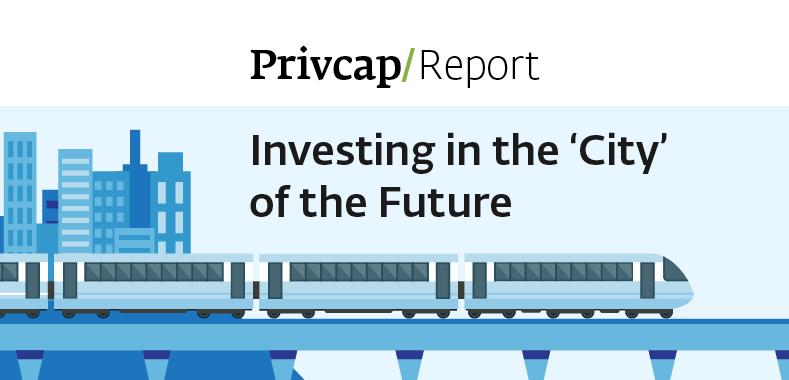How Transit Hubs and Driverless Cars Change the Game
Three real estate investment experts discuss the impact on real estate of two important trends – the increasing expense of urban areas and the advent of driverless cars. Will certain suburbs be seen as extensions of the nearby city? What happens to the value of parking once streets are prowled by driverless cars?
Transcript Download Transcript
How Transit Hubs and Driverless Cars Change the Game
David Snow, Privcap:
Today, we’re joined by Matthew Baron of Simon Baron Development, Seth Pinsky of RXR Realty, and Kenneth Weissenberg of EisnerAmper. Gentlemen, welcome to Privcap today. Thanks for being here.
We’re talking about investing in real estate and, in particular, investing in the city of the future. So, what do we need to understand about the way cities are changing, such that we make the best long-term real estate investments? Why don’t we start with a question for Matt? What are some risks for investors investing long-term capital, if they don’t really understand the way that cities are developing over the long term?
Matthew Baron, Simon Baron Development:
Yes, I always start with the tenet of “location, location.” When you’re looking at that for us, we’re very focused on transit hubs and proximity to transportation, as we invest around central business districts, like obviously New York City. So, long term, if we’re talking about how cities are growing, I think understanding how that transportation landscape is changing and the kinds of access to transportation that people are going to have.
Seth Pinsky, RXR Realty:
We are heavily focused on trying to explore the relationship between transportation networks and affordability, actually. One of the big challenges New York faces today is how you accommodate a growing population and growing workforce in a city in which it’s very hard to develop. A not-surprising result of all that has been that, in core and prime neighborhoods, you’ve seen the costs escalating because supply is having a hard time keeping pace with demand.
The question we’re asking now is that as the subway system, which has its limits, is reaching capacity, and also as people are beginning to get near the end of subway lines, where else is there for people to go? So, one of the things we’ve been exploring very closely is the suburban transit lines. And what we’ve found is that, in many older suburban communities, you see downtowns that feel very much like outer-borough neighborhoods.
Snow: Seth, briefly talk about your professional background, because you’ve seen city development from a slightly different angle, right?
Pinsky: Sure. Before joining RXR, where I’ve been for the last four years, I was with the Bloomberg administration at the Economic Development Corporation for 10 years, working for the last five years as the president. As a result of that, I’ve had the good fortune of being able to look at development projects from both the public and private side.
Kenneth Weissenberg, EisnerAmper:
It’s not just transportation, it’s also technology. You have self-driving cars on the horizon. That’s going to be probably as big a change as the iPhone was to the way we live and work. You’re going to see more people telecommuting, less of a need to be in the central business area, people doing meetings on Skype. It’s changing the way we think about work and changing our space needs for work. So, we’re seeing a lot of trends coming together, drawing the very, very rich into the center of the city and pushing the working person further out.
Pinsky: What you’re seeing is that there’s so much pressure being put on prime areas that the only way to address that is through density. But, at the same time, you have people in these communities who legitimately are saying that they don’t want the character of their community changed on a wholesale basis. So, the question is how you square that circle. Transportation really is the only option that we have. The way I like to think about it is that, today, what we’re trying to do is squeeze ten 100-story buildings into a limited area. Whereas, if we were to invest more in our transit infrastructure, we’d instead be able to build a hundred 10-story buildings, which is a lot easier to do.
Snow: As investors, how do you two conduct due diligence to a point where you feel you have a good handle on the ability for people living in a certain area to get around and whether their access from one point to another is going to improve or not?
Baron: The first thing we like to do, whenever we go into a new neighborhood, is to try the transportation out ourselves. So, it’s interesting—we’re building a very large building right now in Long Island City. We’re building a half-million square-foot rental building that sits right on top of the train. And the proximity to Manhattan is absolutely tremendous. I think we’re three minutes to Midtown, something like seven or eight minutes to Times Square. It sounds kind of silly, but the first thing is, you’ve got to live it—feel it a bit yourself before you start to look at just the analytical data.
Pinsky: Yes, I agree with that 100%. It’s about spending time in any given location, walking the street, talking to people, and taking the transportation network yourself. You have to really do it. It’s not just going once and saying, “OK, I saw this is a 25-minute trip.” You have to do it repeatedly. Because what you learn is that it’s a 25-minute trip when everything’s working, but it seems like one out of every three times, the train is broken or whatever. And that tells you something important.
I think also just staying current on what’s happening in the region—reading blogs, reading news sources—is an important part of it. Because you not only need to understand what’s happening, but also to understand what policymakers are doing and how that’s going to change what’s happening going forward.
Snow: For example, there is an investment thesis that says that Philadelphia, given an improved transportation outlet, could become more like a suburb of New York if, again, if there’s some more high-speed rail service to New York. Yet, if that doesn’t materialize, it is not a suburb of New York. It is Philadelphia.
Pinsky: Yes. I mean, all I know is my grandfather in the 1950s was buying property on Second Avenue for the Second Avenue Subway. He’s dead and, 40 years later, it finally opened. So, I don’t know, I think again—
Snow: So he was right—
Pinsky: —to be careful.
Snow: —he was just a little early.
Pinsky: A little premature.
Weissenberg:
You talk about Philadelphia. Philadelphia could boom on its own right, but the commute from Philadelphia’s about an hour and 15 minutes. I live in Northern Westchester, where the commute’s about an hour and five minutes. So, even today, Philadelphia is an expensive commute, but it’s commutable.
Pinsky: By the way, I think that that’s a great point to make. It’s really not about distance in terms of miles. It’s about time. That’s how people judge whether they’re proximate to a location.
Snow: Let’s try to wrap our heads around a technology that’s quite different from rail, which is driverless cars. If you imagine a city that is swarming with driverless cars, what real estate will be required?
Baron: I think the first thing that comes to mind is parking. Right? I mean, you look at parking garages—over the years, parking garages have been disappearing throughout the city. If the driverless-car technology expands the way people are talking about it expanding, it makes owning a car unnecessary. Or you own your car, but it can basically act as an Uber while you’re at work, then take you back home—you start to lose the need for parking garages and that can become effectively obsolete real estate.
Weissenberg:
Even Uber has changed the way people think about owning a car in the city. Because you can rent a car for a day, if you need to go out to the country or something like that, for just generally getting around. You pop on your phone and there’s Uber in five minutes, tops.
Baron: We built a building in Long Island City seven years ago that was a 160,000-foot building. We had a 15,000 square-foot parking garage that we leased out to an operator and when we came back to ask him, “How many of our tenants leased a parking spot?” I think it was one or two tenants. We said, “But the garage is always full. Who’s parking in the garage?” He said, “People who are commuting in from Flushing [or] from Long Island. They’re coming in and they’re parking here, because it’s half the price of the city. They’re taking the train one stop.
Snow: I guess parking is a huge issue for people with fairly substantial commutes. They’re parking at the train station and actually having a driverless car take them, whatever, the 15-minute drive from their suburban home to the train station would be a game-changer.
Pinsky: The reason why our train stations, among others, have been historically surrounded by very little density is that you need to accommodate parking. If you could reduce the parking requirement there, development would become much easier and you could begin to resettle people in denser, more transit-friendly ways in the suburbs, just like we have in the outer boroughs and elsewhere in the city.

